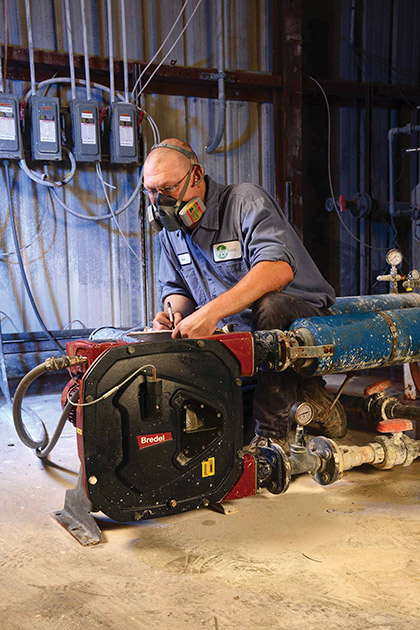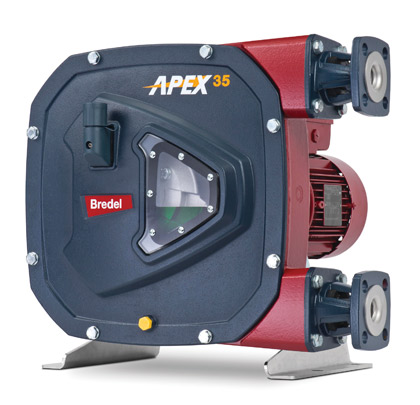The benefits of APEX35 hose pumps from Watson-Marlow Fluid Technology Group are proving impossible to ignore in the United States, where two leading plants are among the latest to adopt this new and innovative technology.
The Canyon Regional Water Authority’s New Braunfels, Texas, plant was seeking an alternative to its progressive cavity (PC) pump to increase the accuracy of pH control. The potable water plant currently controls pH by dosing lime slurry using a PC pump, which runs for approximately twelve to sixteen hours a day at a 238 gallons per hour.
RELIABLE, CONSISTENT FLOW
Watson-Marlow has supplied a Bredel APEX35 hose pump to the New Braunfels CRWA plant so that engineers can see the benefits of using a hose pump to handle the lime slurry. First of all, insufficient flow consistency of the PC pump is prone to causing fluctuations in the pH control, which means variations in water quality. Installation of the APEX35 hose pump with its stable and consistent flow means that these problems have already been eliminated.
Another huge practical advantage of this new hose pump at the site is reduction in maintenance. The abrasive nature of the lime slurry means that maintenance is required on the PC pump every three months and takes up to five hours to complete. Furthermore, this often requires expensive consumables such as stators, rotors, or linings. In contrast, the APEX35 pump has required no maintenance in its first six months of operation at CRWA, and when maintenance is finally required, it will take no more than thirty minutes, with the only consumable part being a single hose element.
DIRECT COMPARISON
The outstanding success of the CRWA APEX pump trial was replicated at the plant of Addenda Corporation, located in Indianapolis, Indiana, which is in the process of comparing its existing hose pump to a new Bredel APEX35. Here the task involves the accurate transfer of a very abrasive, high solids, lead-based slurry between process stages. The existing hose pump and the APEX35 are being run under exactly the same process conditions, with flow at approximately 660 gallons per hour.
The company’s existing pump requires hose replacement every eight to nine months; a very acceptable and cost effective uptime period. The APEX35 pumps’ hose replacement significantly is not expected before fourteen months running is complete. This is thanks largely to the APEX design, which is optimized for medium pressure applications and long lasting hose elements, and increase it pump uptime arrives as a consequence of selecting the right pump for the application.

ADVANTAGES TO CUSTOMERS HANDLING ABRASIVES
When handling abrasive substances, a major advantage of APEX hose pumps is that they have no costly wearing components like seals, valves, membranes, stators, rotors, or glands to maintain. Self-priming, dry running, and with no internal valves, hose pump technology also helps users improve their processes by eliminating troublesome ancillary items like anti-siphon valves, back-pressure valves, degassing valves, or run-dry protection.
Consequently, APEX hose pumps are perfectly suited for transfer and metering abrasive, corrosive, viscous, shear-sensitive, gaseous, crystallizing fluids, or even fluids with a combination of these properties.
DESIGNED FOR LONGEVITY
Another important factor in being able to reduce maintenance costs at Addenda is that the APEX35 requires eighteen perfect less hose compressions for the same volume transferred by the existing hose pump (which needs around 1,500 strokes for each 264 gallons). What’s more, the direct coupled technology and self-supporting rotor on the APEX35 help maximize gearbox and bearing life to further add to the package of savings for the plant.
ABOUT THE AUTHOR
Watson-Marlow Fluid Technology Group (WMFTG) is the world leader in niche peristaltic and sinusoidal pumps and associated fluid path technologies. Founded on nearly sixty years of supplying engineering and process expertise and with over one million pumps installed worldwide, our pumps are tried, tested and proven to deliver.
____________________________________________
MODERN PUMPING TODAY, December 2015
Did you enjoy this article?
Subscribe to the FREE Digital Edition of Modern Pumping Today Magazine!



